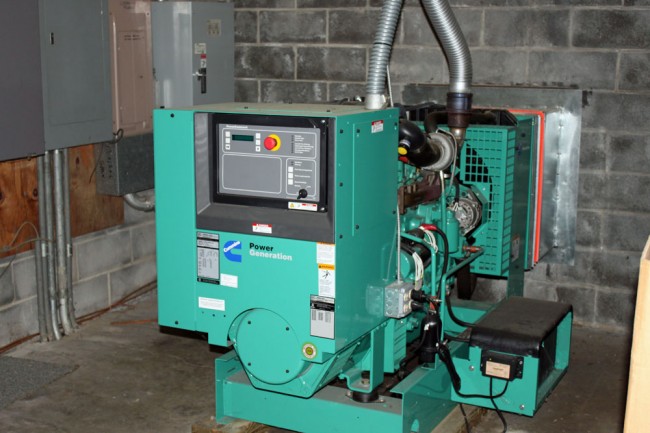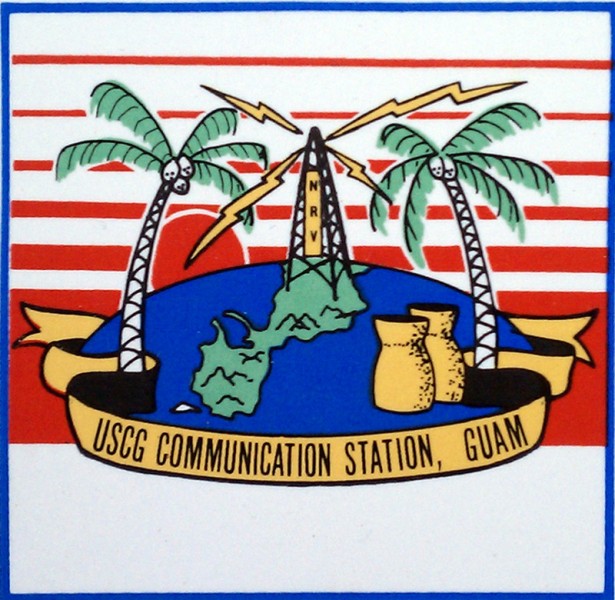WROW 590 KHz, Albany, NY is another one of those successful AM stations. They have a music format, which I would characterize as a blend between nostalgia and oldies. They do well in the Albany book and most importantly; make money. The Wikipedia entry is a little dated, as they have had a music format for over four years now. The low dial position helps, as I can get the station up near the Canadian border and most of the way down to Poughkeepsie during the daytime pattern operation, which is better than across-town WGY, 50,000 watts non-directional.
Here are a few pictures of the transmitter site:

WROW main transmitter

WROW transmitter room; main and backup transmitters, phasor, equipment rack, etc.

The former backup transmitter for WROW-AM. This was moved from the original transmitter site, located a few miles north of the current transmitter site in Glenmont, NY. The current transmitter site was constructed in 1974.

Backup power

WROW antenna array. The station transmits with 5,000 watts daytime and 760 watts night time. The towers are slightly tall at 105 electrical degrees. It is hard to do tall towers at the low end of the dial because the towers get very tall. These are 149 meters (488 feet) tall.






Very nice, its ironic that 590 in Albany has fared better than 590 Boston (the original CBS owned all news WEEI)…. what I consider a real crime
Again, thanks for highlighting another money-making, community-oriented AM broadcast station, Paul. The old RCA xmtr brought back many good memories.
Vy 73, Chet W6XK
Nice-looking site and good to see an AM do well.
The BTA-1R brings back memories of the time I was asked to troublshoot persistent troubles in one (or a similar model) at a station in a nearby suburban community. Opening it up, I discovered some predecessor of the present Chief had “improved” the low-level audio stages. He asked, “Is that a problem?”
Yep. It was not a well-executed mod and didn’t make a lot of sense. The mad-modifier had at least left the original transformers and other large parts in place, so we put it back the way RCA did it and lo, the troubles ceased. Who’d’a thunk?
While there are some things that can be improved in typical AM tube rigs — the elders ran beaucoup negative feedback (making for slow slewing) and LF response can be dodgy — not every homebrew upgrade actually results in better performance. In this case, the worst problem was he hadn’t maintained symmetry; looked like a mistake instead of intentionally done but it had been that way for a few years.
FWIW, too much inverse feedback in a conventional AM modulator can usually be fixed with a couple of pots, a distortion analyzer, and time to fiddle, but it is not for the faint of heart. (It usually makes more sense [for those golden-eared enough to be bothered by it] to “fix” by calling up one of the modern mfrs and ordering a tiny little solid-state rig.) It is not without risk. I suspect the original designers *intended* to slow down transient response…and prevent ringing/overshoots/arcing in modulation transformers.
(And all that reminds me of the time I met Jack Selmeyer [sp?], when we went AM stereo using a 5 kW Collins Power Rock into a 3-tower DA and he did some off-the-cuff redesign, looking at the low-level pulse modulator schematics and wondering aloud, “What was I thinking of when I did that?” I’m disinclined to second-guess such men unless there is very good reason.)
That is a good story, Roberta. Inverse feedback is indeed designed to reduce overshoot and need to be adjusted for minimum distortion. It can be a tricky business, what with the 2,500 to 3,500 VDC running around in the transmitter. Messing around with a Collins Power Rock is not for the faint of heart.
…Getting best Motorola AM stereo performance from a Power Rock involved (among other things) tweaking up the 3rd-Harmonic resonator in the final plate circuit *hot.* One does this by adding an extension shaft and knob out the back of the plate compartment — and removing the back door of the transmitter cabinet with the interlocks bypassed. I got to twiddle that control and found myself standing very, very far back. 🙂
(My best things-gone-wrong stories have been online over at Jim Hawkins’ for years, involving things like shorted Austion ring transformers.)
Nice write up Paul…
Long time lurker here at ER. When I saw the pic of the BTA-1
I just had to make a comment. A dream that almost was.
Got a tip on a free RCA Xmitter up for grabs, first come, first serve. Wrote down the addy and jumped into my pickup
and headed out. It was only 80 miles from my QTH, just how much demand is there? Surely I’d get lucky. When I pulled into the warehouse they were just tying down a blanket on the RCA. I stopped them, just one peek please. They rolled back the blanket,it was cherry. Tears in my eyes.
5 minutes earlier it would have been mine.
Sure would have been nice at my shack away from home in KY.
Sitting there chewing the rag on 160m AM with the guys keeping the cabin warm on those winter nites.
Bobbi I love the austin-ring story. I wonder if that shoe ever floated up?
73 de Greg
A few weeks ago I passed the WROW transmitter while driving from Manhattan to Niagara Falls. Given the height of the towers (I had guessed around 500 feet, which wasn’t far off), I knew immediately it was WROW, though I hadn’t paid attention to the station since my days as a boy DXer (and ham) in New Jersey, half a century ago. Nice to see this write-up, and to know the station is doing well. (Here are the ratings: http://ratings.radio-online.com/cgi-bin/rol.exe/arb069 .) I also notice that WROW has a 250-watt translator on 100.5 FM. That certainly helps. When I drove back through last Sunday from Lake George I noticed the FM signal it at least reaches cars in the inner metro.
About the towers… While 105° is over a quarter wave, and tall for a station with a low dial position, there are some down there with surprisingly tall towers. The biggest, I suppose, is WNAX, which uses a 190° tower (277.59 meters, 910.7 feet). Sitting on highly conductive prairie dirt, its daytime coverage is immense: http://radio-locator.com/cgi-bin/patg?id=WNAX-AM&h=D . My mother grew up listening to it in Napoleon, North Dakota, 277 miles (I just calculated) away.
As for 590am in Boston, WEZE, it uses 75.6° towers, and is north-south directional (protecting WROW), which is poorly matched to its metro, much of which is west of the transmitter. Ground conductivity around there is also poor. Still, having lived in Boston for six years, I was always surprised at how not-great that signal is. I have a sense there’s something wrong with the facility, but it might just be the conditions.
Speaking of stations with low dial positions and huge coverage, KLIF in Dallas has an application to move the transmitter, drop to shorter towers, and reduce night power: http://fccinfo.com/CMDProFacLookup.php?sKilometers=30&sLatitude=32-47-00&sLongitude=96-48-00&tabSearchType=Within&sCurrentService=AM&order=17|A|N What’s that about? (It appears to want to co-site with KTCK/1310, which uses 225° towers. My guess is that the land under the current transmitter is worth more than the station. That’s what happened to WMAL/630 in DC: https://blogs.harvard.edu/doc/2015/02/10/will-wmal-survive-losing-its-transmitter/
BTW, as an editor for Linux Journal, I dig your Linux post here: https://www.engineeringradio.us/blog/2016/07/a-linux-based-remote-control-system/ . Would you be interested in contributing something like it to Linux Journal? If so, write me. 🙂
Cheers,
Doc